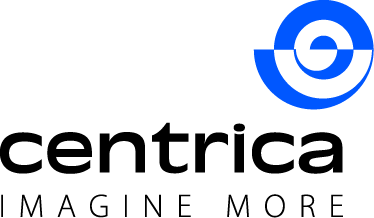To play a leading role in the production of content in the age of digital innovation, it is important that museums and heritage sites offer themselves as the “agora” where tradition, scientific and technological development meet and find ways for contemporary dialogue.
In order to take advantage of the cultural heritage resources it is necessary to think strategically about their future development and create a digital space where different publics and heritage can connect together in a new “global museum experience”.
The possibilities of media devices allows the users to select different levels of detail, to customise the paths of knowledge, to foster dialogue with contemporary contexts in the rest of the world, thus breaking down geographical barriers and cultural and linguistic diversity. In practice, this is achieved by designing content and related communication strategies that identify the languages and the most appropriate tools to interact with the different information requirements, idioms spoken and the dynamics of interaction with each type of audience.
With this new approach the interaction between Heritage and Technology might be the proper manner to communicate the experience of visiting in a simple and focused way with respect to the type of visitors.
Technology can be crucial for giving visitors the opportunity to access, in a natural and intuitive manner, systems of contextual search and innovative navigation features to quickly identify relevant content.
At the beginning of the new millennium, museums and heritage sites are to be considered as a space for learning and interaction, not “just” a cultural institutions founded on functions of conservation. This means to be also focused on a “socially inclusive” perspective, able to offer a museological project and a mueseographical path adaptive to different keys of interpretations and cognitive expectations.
In order to satisfy the request addressed to heritage sites by the globalized tourism it is essential that professionals acknowledge the question of cross-cultural communication, and make a conscious effort to overcome these problems. Globalized heritage communication strategies should consider the museum as a “sensible system” where cultural differences may help in creating several different visitors interpretations.
Culture accessibility has the power to address different contextual frameworks of cultural diversity including a multiplicity of interactions and cultural borders. This means that museum and heritage sites should create the better condition to overcome these borders include race, ethnicity, colour, gender, class, age, physical ability, regions, location, language, faith, creed, economic status, sexual preference and so on.
Museums are increasingly challenged to address cross-cultural generational concerns through being relevant to children (millenials), young people (digital native) and/or senior citizens in multicultural and growing digitally skilled societies. Museums should connect to play a seminal role where the confidence and cultural self-esteem of youth are coupled with the creation of cultural industry employment opportunities in innovative ways.
New technologies have become a global developmental reality across the world irrespective of their economic contexts. However, the question of the accessible interface with these new tools and their cultural impacts has not been yet completely addressed. Information technologies will provide better access to services and cultural exchanges.
During the meeting different projects addressing these issues will be presented.
Venue: Sala dei Gigli di Palagio di Parte Guelfa
Date: 21 May 2015 9.00 to 17.00
Convenors:
- Stefano Bertocci, Full Professor, Department of Architecture DIDA, University of Florence
- Laura Longo Municipality of Florence
Title:
Cultural Heritage Sciences
&
Multimedia Communication Strategies
Wellcome for the Municipality of Florence: Cristina Giachi, Mayor Deputy of Florence
9:30 am
Key note speech: Andrea Nanetti, Nanyang Technological University
10:00am
Invited speakers :
- Luca Toschi, CSL, University of Florence
- LIN Chin-Yew, PRM, Microsoft Research (Beijing)
- Alain Dupuy, Innovision, France
- Monica Carfagni, DIEF, University of Florence
- Alberto Del Bimbo, DINFO, University of Florence
- Marco Cappellini, CENTRICA, Firenze
- Sandro Parrinello, DICAr, University of Pavia, ARTHUR con la partecipazione delle aziende italiane: 4ESTUDIOS Srl, Gamma Software, GMS Srl, Infomarketing, Maurizio Borghini, Presidente Gruppo ICT di Confartigianato MS, Ivana Genestrone, Project Manager
- Paola Puma, DIDA University of Florence
LUNCH BREAK 12:30 – 14 pm
- Franco Niccolucci, PIN – Prato, University of Florence
- Masahito Kawamori, Graduate School of Media and Governance, Keio University, Japan.
- Luca Pezzati, CNR Firenze, Responsible EU project Iperion CH
- Dawid Adam Iurino, DST, Sapienza University, Rome, Lorenzo Rook, DST, University of Florence
- Oriana Sartiani, Scuola di alta formazione nel restauro dell’Opificio delle Pietre Dure di Firenze, MiBACT
- Alex Toursky, IZI.Travel, Amsterdam
- Carlo Triarico, APAB, Firenze
- Antonio Glessi, ISIA, Firenze, Gianluigi Sanzi, Collaboratore al Progetto Allestimento Scavi Archeologici di Palazzo Vecchio, Firenze,Laura Longo, Municipality of Florence.
Per conoscere l’orario del programma interventi file PDF



